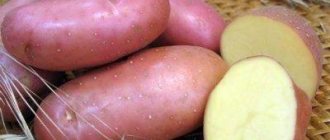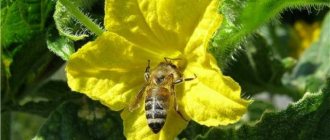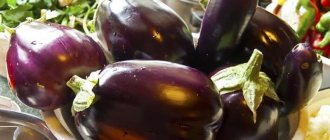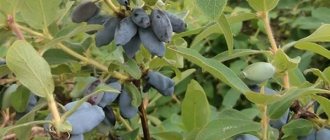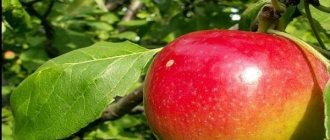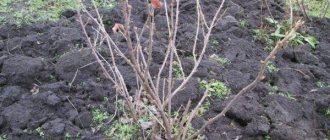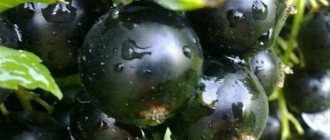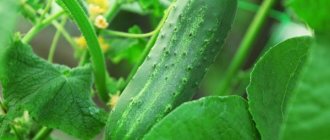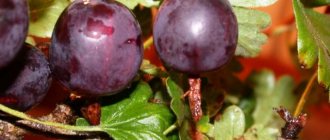Characteristic
The Lyubava potato is an early table variety. Tubers fully ripen in 60-75 days after placing planting material in the ground.
Despite the fact that the variety is positioned as a table variety, it shows phenomenal productivity. On an industrial scale, with chemical treatments, high-quality watering and fertilizer, you can get up to 520 centners from 1 hectare of planting. On average, yield indicators are in the range of 300-450 c/ha.
Commercial tubers are simply huge. Often there are specimens weighing up to 150 grams. In addition, the average number of tubers in 1 hole is 20, which is several times higher than that of competitor varieties.
The color of the Lyubava shell is pink, the color of the pulp is white. The pulp does not darken when peeled or exposed to air.
Starch content from 11% to 17%. It is worth noting that the amount of starch in the composition directly depends on the quality of the soil. The more nutrients it contains, the higher the starch content will be, and the more crumbly the potato will be. And accordingly - vice versa.
The variety has excellent reviews from entrepreneurs who grow Lyubava on an industrial scale. On their part, it was noted that the safety of tubers reaches 98%. Also, Lyubava is not afraid of long-term transportation.
The variety is not capricious in terms of care, but it also does not “grow anywhere.” When planting Lyubava, you need to take into account the fact that the tubers will grow well only in fertile soil that is systematically watered.
VARIETY CHARACTERISTICS
The variety has good taste. The high starch content allows you to prepare fluffy purees. These potatoes are good in any form: fried, baked, boiled and stewed. The number of tubers collected is 10–20 times greater than those planted. Lyubava responds with gratitude to the application of organic fertilizers.
The Lyubava variety is perfect for growing in garden plots. It has undoubted advantages:
- productivity;
- friendly germination;
- early maturation;
- uniform formation of tubers;
- resistance to dry periods;
- unpretentiousness;
- excellent taste;
- good shelf life in basements and cellars;
- resistance to potato cancer and viral diseases.
147w" />
Lyubava potatoes are great for frying
The disadvantages of the variety are successfully eliminated by preventive measures - agrotechnical methods of combating diseases and pests. The disadvantages include:
- moderate susceptibility to late blight;
- average resistance to other diseases;
- susceptibility to nematode.
The Lyubava variety is stored well until spring, without requiring special conditions. It is highly resistant to cancer, which is considered the most dangerous disease for potatoes.
Susceptibility to late blight is moderate. If preventive measures are not taken, the leaves may be affected by this fungus. Tubers are more resilient, but you should still mow and remove the tops before harvesting. Can be affected by golden cyst nematode, so insect pest control is necessary.
Cyst means bubble in Greek. This is a durable protective shell that protects microorganisms during unfavorable periods. In such a “bubble” the nematode tolerates winter frosts and summer drought well.
147w" />
Golden nematode in the roots of a potato bush - Lyubava’s enemy
Pros and cons of Lyubava
Over a long period of growing this variety, gardeners have established its main advantages and disadvantages. So, the first ones include:
- The tubers have excellent commercial qualities: large mass, a small number of superficial eyes, almost complete absence of “peas”, excellent preservation - 98%.
- This is an early variety, which in some cases takes two months to ripen.
- Lyubava is universal. It can be used for making purees, soups and frying.
In addition, a number of shortcomings were noticed in it. First of all this:
- Weak resistance to diseases such as late blight.
- Friability. Many people don’t like these varieties, but on the other hand, this is an advantage.
Correct fit
Potatoes begin to be planted in late spring, when the soil has warmed up to a sufficient temperature. Indicators for planting crops can be:
- Soil temperature +9-10 C.
- Birch buds blooming.
If the conditions are met, you can begin planting.
Only the best tubers are selected as seed material. They must not be defective (cuts, stains, rot, etc.). Also, it is not recommended to use large or small potatoes. It is not advisable to cut it. The ideal planting material is whole tubers 70-80 g.
The landing pattern is standard. The row spacing is no more than 70 cm, the distance between holes is approximately 25-30 cm.
Lyubava potatoes are quite easy to care for. You only need to water it a few times, hill it up and fertilize it.
Fertilizer
The crop does not need fertilizer if:
- The soil is light and nutritious.
- Autumn fertilization was carried out.
Speaking of the second, it can completely satisfy all the needs of potatoes. An excess of nutrients can only lead to a deterioration in quality and yield.
But it often happens that the soil is too heavy or autumn fertilizing, for some reason, was not carried out. In this case, during planting of root crops, the hole is “directly” fertilized. Even before placing the tuber in the hole, wood ash or humus is added to it.
But as noted above, most often, autumn fertilizing of the site is quite sufficient.
Irrigation
Irrigation plays an important role in the development of culture. You need to water the potatoes, as they say, “rarely, but accurately.” Experienced experts recommend following the following irrigation scheme:
- The first watering should be carried out after the tops have grown by 10-15 cm. Earlier watering is prohibited.
- The second watering is when the first flowers appear on the tops.
- Third watering when the flowers have disappeared.
Naturally, you can increase the number of waterings. It depends on climatic conditions, amount of precipitation, etc.
What else is worth paying attention to? Experts also do not recommend watering Lyubava potatoes after flowering. Such an agrotechnical procedure can be harmful, increasing the risk of late blight.
Hilling
Many gardeners treat this procedure with disdain, thereby not understanding its value. Hilling does not just keep the tops from sticking to the ground, it performs a number of important functions:
- As mentioned above, it holds the tops, preventing them from “falling” onto the ground. This, in turn, protects it from premature drying.
- Also, during hilling, the soil is loosened and saturated with oxygen. In the future, this plays an important role in the quality of the harvest.
- The last function of hilling is cleaning the area. This procedure removes weeds that inhibit potato development.
Hill up potatoes 2 times per season. The first time is when the tops have grown by approximately 20 cm. The second time, hilling is carried out as the green part grows. But usually it is carried out 15-20 days after the first hilling.
Features of cultivation
The Lyubava potato variety is unpretentious and grows well in various climatic conditions. It is not demanding on soil fertility and tolerates dry periods and temperature changes.
But to obtain a rich harvest, compliance with all rules of agricultural technology is required.
Landing Features
Even the unpretentious Lyubava variety is provided with the most comfortable conditions for germination. If possible, choose sunny areas with loose, permeable soil. To obtain a harvest, the land is first prepared and organic and mineral fertilizers are applied.
The following is used as fertilizing:
- bird droppings;
- humus;
- compost;
- manure;
- phosphorus, potassium and nitrogen mineral fertilizers.
On a note!
To enrich the soil with nutritional components, planting green manure crops is practiced. The green part of these plants is then plowed into the ground before planting to fertilize the soil.
The exact date chosen depends on the climate. Usually planting occurs in the month of May. By this time, the soil should warm up to a temperature of +9-10 degrees.
The planting pattern depends on the characteristics of the soil. On light soils, the planting depth is about 11 cm, and on heavy soils - up to 8. Optimal planting pattern: 60x40 cm.
Potatoes should not be planted thicker, as the bushes will interfere with each other as they grow.
How to increase your harvest
A great way to speed up germination is through germination and vernalization. Clunies are taken out of storage 30-35 days before disembarkation. They are placed in a bright room so that rays of light enter. The root vegetables will begin to turn green.
May be interesting Potato variety Krepysh: description and characteristics, reviews Potato variety Gulliver: description and characteristics, reviews Slavyanka potato: description and characteristics, reviews
To ensure vernalization of root crops occurs evenly, they are turned over. This is done very carefully so as not to damage the young shoots.
In direct sunlight, solanine (a toxic substance) will accumulate in the peel. Such potatoes have stronger immunity, get sick less often, and are not so often attacked by pests.
To accelerate the growth of potatoes, you can use stimulants; root vegetables are soaked in their solutions:
- Poteytin;
- Epin;
- Bioglobin.
Treatment with such preparations accelerates the process of sprout formation, as well as the emergence of seedlings.
Features of care
Basic care activities are traditional:
- hilling;
- weeding;
- loosening;
- fertilization;
- disease prevention;
- pest control.
During the period until the first shoots appear, several loosening operations are carried out so that air reaches the seed material. During the loosening process, weeds are removed. Be sure to loosen the soil after rain to prevent crust formation on top. The procedure is conveniently carried out using a rake.
Watering is carried out as needed. It is especially important to moisten the soil during budding. If there is a lot of natural precipitation, then watering is not needed. It is performed in the evening. Water consumption is 2-3 liters for each bush. It is best to pour between rows so as not to expose the roots.
The first hilling is performed when the bushes reach a height of 10-12 cm. The procedure is mandatory, it promotes the growth of tubers on the stolons and better plant growth.
On a note!
If the weather is hot outside, watering is carried out before hilling.
Up to 3 hillings are carried out per season. The procedure is repeated for the second time approximately 2 weeks after the first.
Fertilizer application
The need to apply fertilizers is determined individually. If a thorough fertilizing was carried out in the fall and spring before planting, and the bushes are growing actively, then you can do without additional fertilizer. Since too much fertilizer can harm the crop.
Fertilize with organic solutions (mullein, bird droppings) or mineral complex fertilizers. It is very convenient to combine fertilizing with watering.
Reviews
Evgeny Vladimirovich, Saratov, 56 years old.
This variety (I haven’t seen others like it yet) has an individual feature. You can find up to 20 pieces in a hole. potatoes, all of them large. Thanks to this, the variety is highly productive.
Ivan Fedorovich, Baranovichi, 60 years old.
We have been growing Lyubava for a long time. Personally, I identified three positive qualities: productivity, early ripening and taste. If you grow potatoes, you can even get 2 harvests in 1 season. The taste is great too. I grow Rosara together with Lyubava, yes, Rosara is inferior, but still the taste is better than other varieties that I have tried over my long life.
Larisa Ivanovna, Kyiv, 45 years old.
Once upon a time Lyubava was grown. Productivity is like productivity, I don’t know why everyone praises it all the time. The potato is pink with a rough surface. The taste is excellent. It gets soft when cooked. I think a lot of people will like it.
Tatyana Viktorovna, Khimki, 51 years old.
We grow for sale. The tubers are huge, but very neat. Easy to transport, no damage. It is easy to sell on the market, as the root vegetables are beautiful and tasty.
Domestic potato varieties delight gardeners with excellent taste, ease of care, and high yields. The Lyubava variety is no exception. It is ideal for growing in any climate zone and attracts vegetable growers with its early ripening: tuber harvesting begins 60 days after planting. Moisture, heat and soil are the three main components to producing firm, neat, delicious potatoes.
The article will tell you what features the variety has, how to grow it and care for it.
Description of the variety
The Lyubava variety was created by domestic scientists . Breeders from the Federal State Budgetary Institution “VNII Potato Farming named after. A.G. Lorch" and the Kemerovo branch of the Siberian Federal Scientific Center for Agrobiotechnology of the Russian Academy of Sciences presented it to farmers in 2003. Then he was included in the list of the State Register of the Russian Federation.
Chemical composition, trace elements and vitamins
Tubers at the stage of technical ripeness contain:
- macroelements - potassium, magnesium, phosphorus;
- microelements - zinc, boron, vanadium and others;
- vitamin C, B vitamins;
- starch - from 11 to 17%.
The amount of starch depends on the type of soil . On soil rich in nutrients, Lyubava accumulates a large percentage of polysaccharides, so the tubers have a crumbly structure. On poor soil there is a minimum percentage of starch, the tubers become more watery and rough.
Ripening period
Lyubava is an early table variety . The growing season is 60-75 days.
Productivity
The variety is distinguished by high yields . Farmers will be able to collect from 300 to 520 centners per hectare.
Disease resistance
Breeders claim that the Lyubava potato exhibits excellent resistance to tuber blight and common scab . However, it has low immunity to golden potato cyst nematode.
Characteristics of tubers, description of appearance
Culture parameters:
- bush is medium, compact;
- stems ribbed, semi-erect;
- the leaves are small, dark green, rich, with a slightly wavy edge;
- flowers are bright, lilac-violet, collected in corymbs, corollas five-parted, medium in size;
- tubers are oval, neat, with red skin, with slight roughness;
- ocelli are medium-sized, slightly deepened;
- the pulp is dense, white;
- the weight of one potato is 120-200 g.
Other potato varieties:
One bush produces up to 20 smooth, juicy potatoes . After heat treatment, the pulp becomes crumbly and tasty.
For which regions is it best suited, climate requirements?
The variety is suitable for cultivation in any climate , even unfavorable ones with prolonged drought or rainy seasons. Lyubava is perfect for regions with short summers - Siberia, the Urals, and the Far East.
Reference. Thanks to the early ripening of the variety, residents of the middle zone and southern regions harvest two full-fledged harvests in one summer.
Description and characteristics of Lyubava potatoes
Lyubava potatoes are distinguished by medium-sized bushes, which can be described as intermediate. Potato bushes are semi-erect with small neat purple corollas. They are medium and can sometimes have a reddish tint. Lyubava leaves are small and open. This is an early ripening variety, demonstrating technical maturity already on the 70th day from the moment of planting. In extreme cases, you may need a few extra days, a maximum of five.
Potatoes of the Lyubava variety are not covered with a thin skin; in some descriptions of the variety it is characterized as rough. Her color is red. The tubers have shallow eyes and an oval shape. The minimum weight of one tuber is 110 g, and the maximum is 215 g. The Lyubava potato variety has white flesh with a starch content of 11–17%.
The main advantages and disadvantages of the variety
Advantages:
- early ripening;
- attractive presentation of tubers;
- suitable for long-term storage and transportation due to its dense peel;
- tubers do not wither, do not crack, do not rot during the entire storage period;
- excellent keeping quality - up to 98%;
- rough leaf blades that the Colorado potato beetle larvae do not like to eat;
- high starch content - good taste and consumer properties.
Flaws:
- requires compliance with crop rotation if plants are affected by nematodes;
- sometimes suffers from late blight when grown in lowlands and poorly ventilated areas;
- needs careful prevention against fungal diseases.
What is the difference from other varieties
Lyubava differs from other varieties in its high starch content , dense tuber pulp and ease of care.
Diseases and pests
The most dangerous disease of Lyubava potatoes is late blight, which affects tubers and tops. It is identified by dark oily spots. Plants are also susceptible to rot, scab, fusarium and other fungal diseases. Spores of harmful fungi enter the site along with low-quality planting material and tools.
To protect plantings from late blight and other fungal diseases, bushes are treated with Bordeaux mixture or other copper-based preparations. Mandatory preventive measures include careful selection of tubers for planting, digging up the soil, applying fertilizers and weeding.
Important! Insects cause significant damage to potatoes and are carriers of diseases.
Potatoes attract the Colorado potato beetle, nematode, and wireworm. Spraying with solutions of Sumi-Alpha or Karate preparations is effective against the Colorado potato beetle. Treatment is carried out when the first beetle larvae appear.
The nematode has the appearance of a worm no more than 1.3 mm long. The pest feeds on plant sap and causes the appearance of malignant tumors. Preventive measures help protect plantings from nematodes. Be sure to observe crop rotation and weed out weeds.
Features of planting and growing
Potatoes are a labor-intensive crop to plant, grow and maintain.
Preparing for landing
Equipment needed for planting potatoes:
- equipment - walk-behind tractor, cultivator, mini-tractor;
- hand tools - shovel, rake, hoe and pitchfork.
The type of equipment depends on the size of the site and financial capabilities . Hand tools must be selected correctly in size and weight, sharpened well, and preferably disinfected. Shovels, rakes, hoes and pitchforks should have comfortable handles and handles.
Germination of seed material begins 1-1.5 months before planting in open ground.
The tubers are placed in a dry container treated with a solution of potassium permanganate. The container is sent to a bright, warm room at a temperature of +10…+15°C.
Harvest and storage
Lyubava is an early variety with a ripening period of 60-75 days . It is advisable to harvest in dry, warm, windless weather.
How and when to collect
Potatoes are dug up at the end of August or mid-September . The timing depends on the time of landing. 1-2 weeks before harvesting the tubers, it is advisable to remove the tops, leaving 15 cm from the stems. The procedure will speed up ripening and ensure good shelf life.
Tubers are collected, separating large ones from small ones . Potatoes the size of a chicken egg are chosen as seed material. Large ones are left to dry in the sun for 1 day. Then they are placed in sand boxes or fabric bags. The tops are burned.
Storage features and keeping quality of the variety
Potatoes are stored in the cellar at temperatures from 0 to +4°C . Thanks to their excellent keeping quality (98%), the tubers are stored until spring, do not crack, rot or turn black.
Advice from experienced gardeners and reviews about the Lyubava variety
Farmers recommend not only following the rules of crop rotation, but also fertilizing while planting potatoes. Add 3-4 g of superphosphate, a glass of wood ash and the same amount of humus to each hole. Fertilizers will saturate the young roots with nutrients.
Reviews about the Lyubava variety are only positive . Here are some of them.
Evgeny Fedorov, Saratov : “I tried many varieties of potatoes. And none of them pleased me with the results. Recently I was advised to purchase a new variety - Lyubava. I read the description on the Internet, looked at the photo and bought planting material. The variety surprised me - under each bush there were 15, 17 or 20 large, neat, unspoiled potatoes. Great for frying."
Ivan Korovin, Baranovichi : “I’ve been growing Lyubava for a long time. Personally, I identified three advantages: productivity, early maturity and taste. If you carefully care for the plantings, you can get two harvests in one season. At the same time as Lyubava, I grow Rosara. The first variety is inferior in terms of fruit weight, but its taste is much better.”
Care
Potato Lux
Any vegetable crop, Lyubava potatoes, is no exception, requires constant care. It consists of such traditional works as:
- Hilling - thanks to it, the access of oxygen to the roots increases, new stolons are formed on the stems, which increases productivity. The first hilling is carried out when the plant reaches 10-15 cm, the next one after a couple of weeks, and so on until flowering begins;
- Top dressing – the optimal amount of top dressing for potatoes of this variety is 3 times. A month after planting the potatoes, nitrogen fertilizers are applied, for example, a mixture of 15 g of urea and 0.5 liters of mullein, diluted in 10 liters of water. During the budding period - potassium-phosphorus (a mixture of 15 g potassium sulfate, 15 g superphosphate, wood ash). 14 days after flowering, complex fertilizers are applied;
- Watering . Despite the drought resistance of the variety, watering is not excluded; it is better to combine it with fertilizing;
- Weeding . To prevent weeds from interfering with plant growth, they are removed constantly. In large plantations, herbicides are used. In summer cottages and garden plots, weeds are removed manually during hilling.
